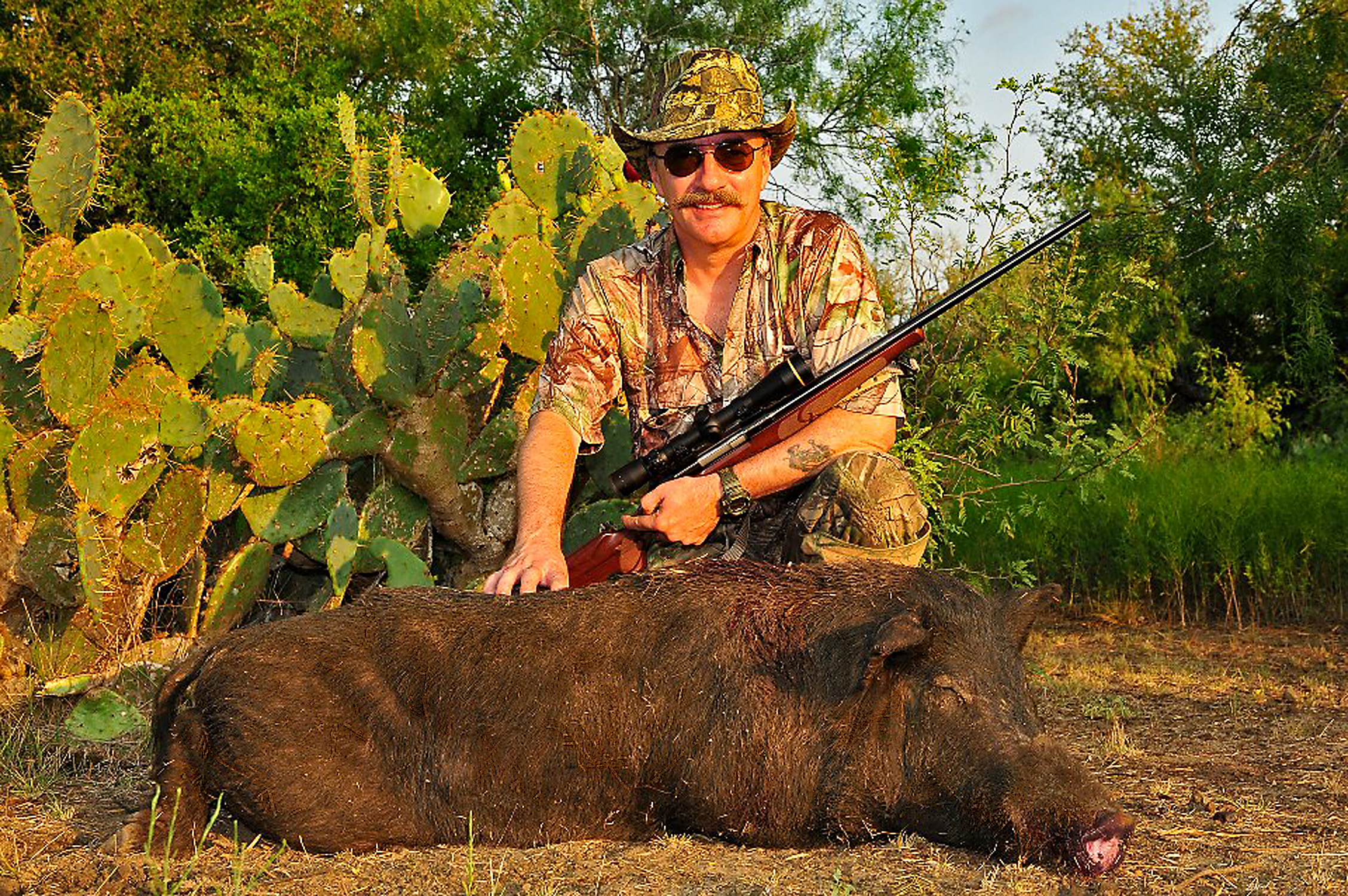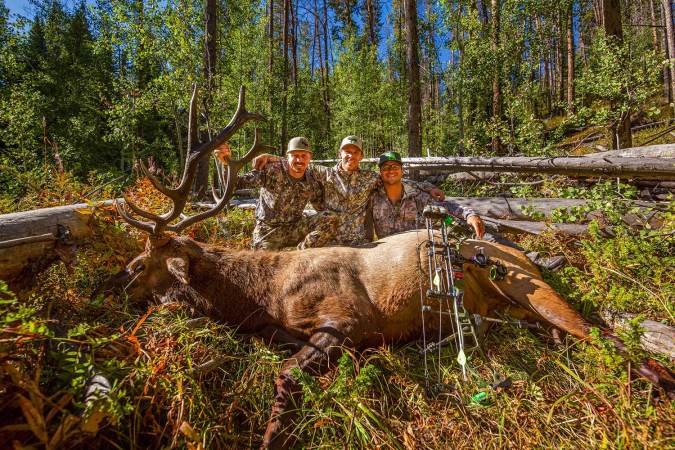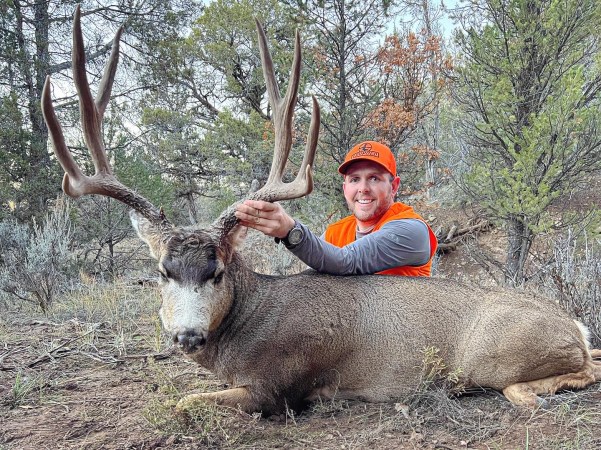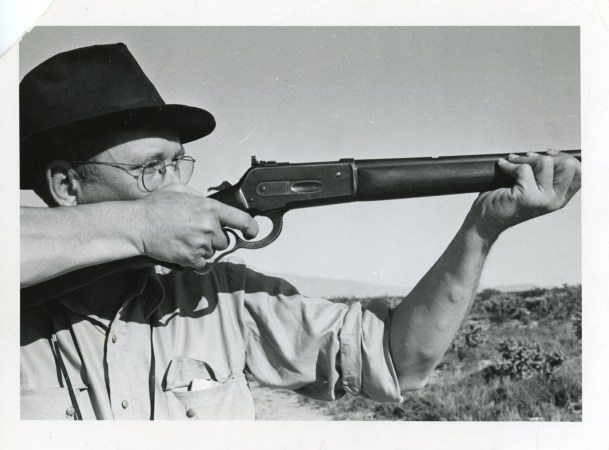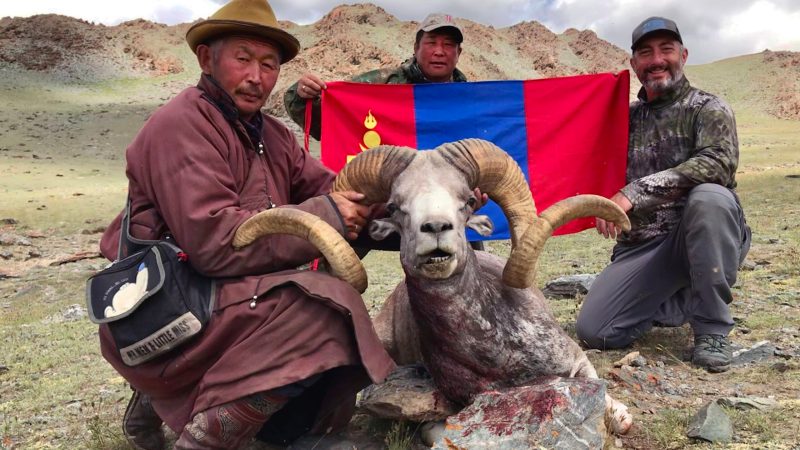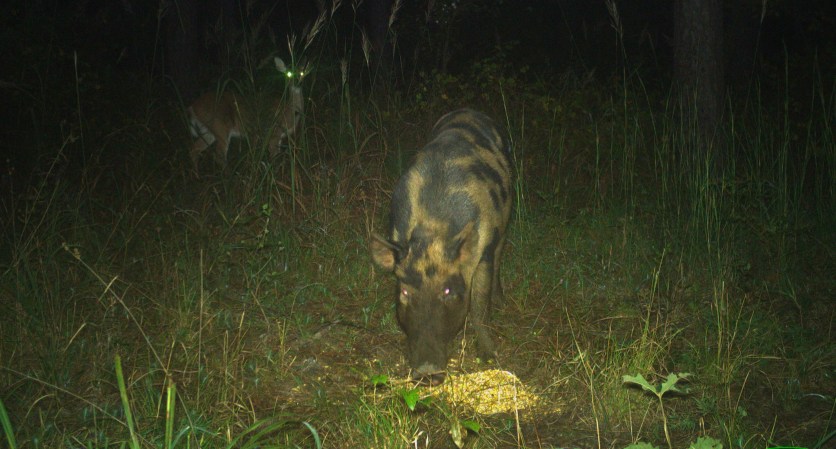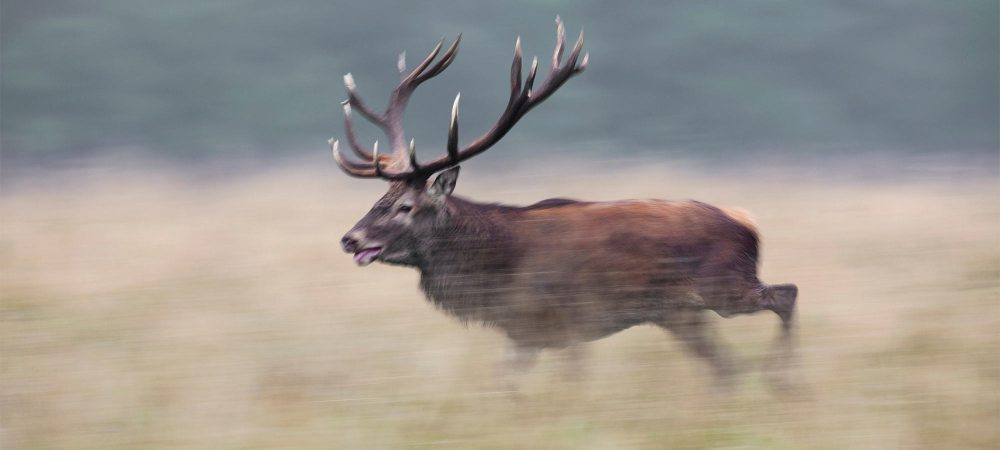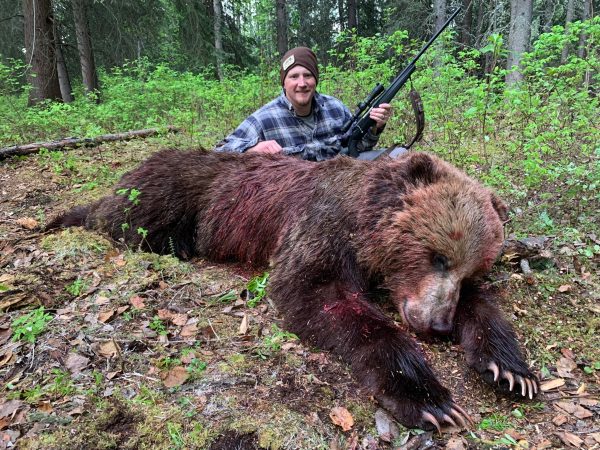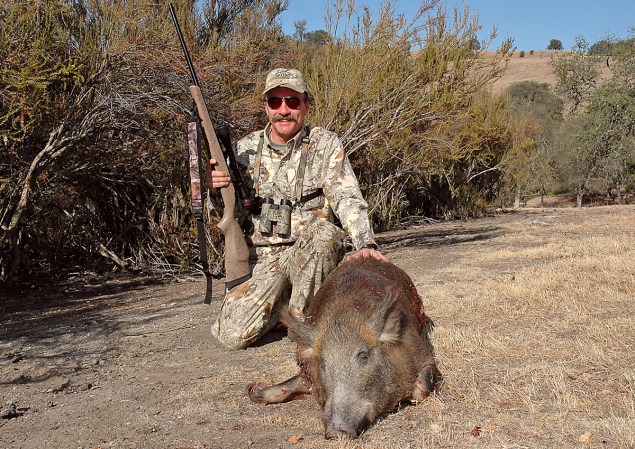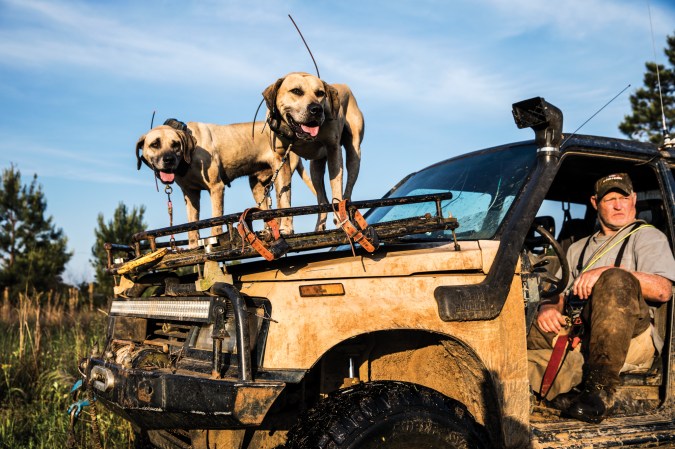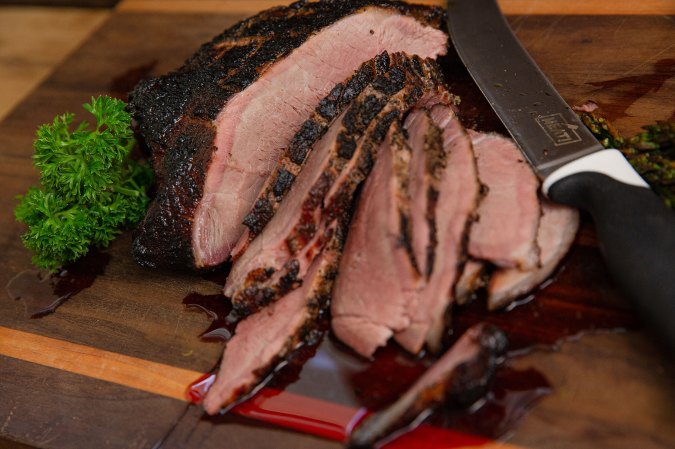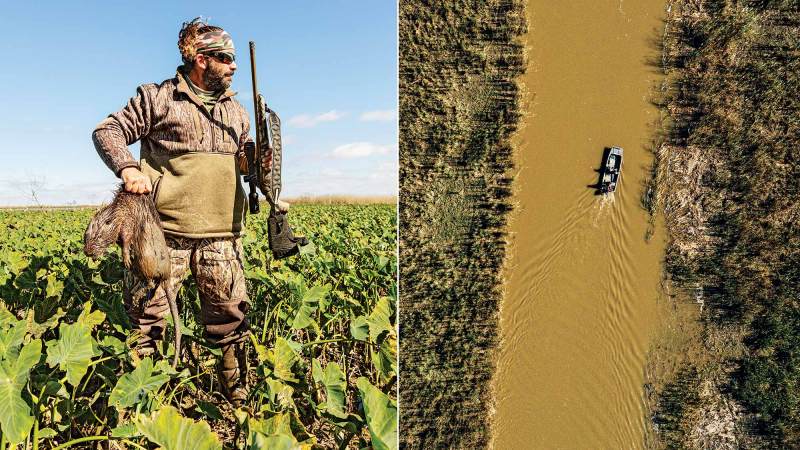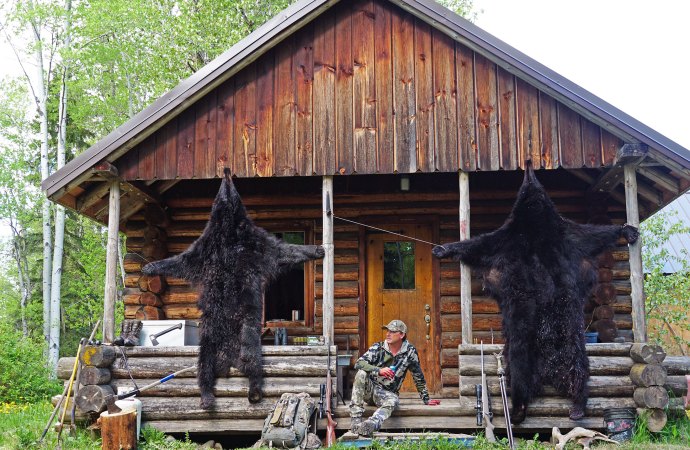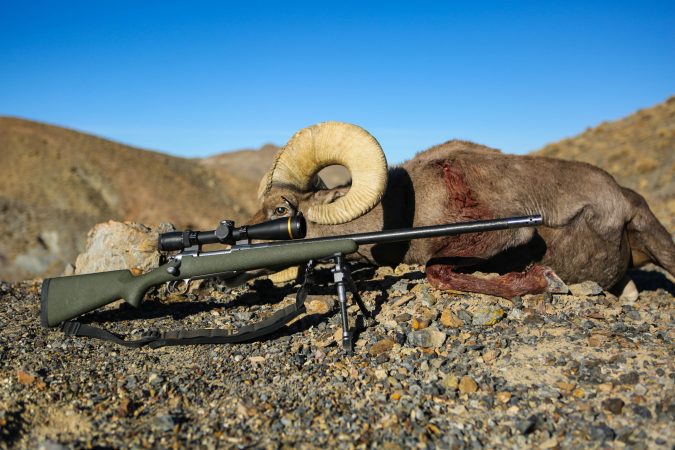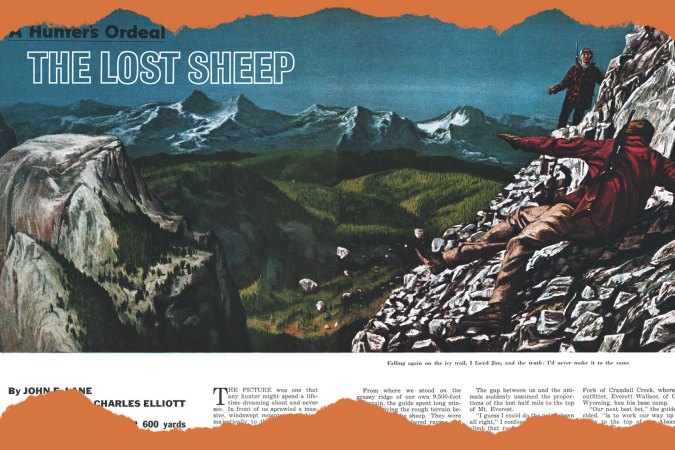Hog hunting runs in my blood. The European last name on the maternal side of my family loosely translates to “the place where men kill boar.” I don’t know if genetic selection played a role, but I have hunted hogs for more decades than I care to contemplate. I have killed them with handguns, bolt-action rifles, lever action rifles, black powder rifles and semiautomatic rifles. On a couple of occasions, when I was young and impetuous, I killed them with knives.
Feral hogs, with an estimated U.S. population of nearly seven million, range across at least 35 states. Their prevalence and the fact that they wreak havoc on crops and ecosystems explains much of their popularity as a target of hunters. Hog hunting can be as simple as sitting in an elevated stand and picking them off as they come into a feeder or as challenging as making a stalk in steep terrain and executing a long shot.
How you hunt hogs depends largely on where you hunt them, when you hunt them, and what conditions you hunt them under. Hunting hogs in the coastal mountains of central California can be quite different than hunting them in the impenetrable brush of south Texas or the swamps of Louisiana.
Entire books have been written on the subject on how to hunt hogs. But here we’ll boil it down to the essentials (including some examples of how not to do it) in order to help you bring home the bacon.
Consider Booking a Guide to Get Started
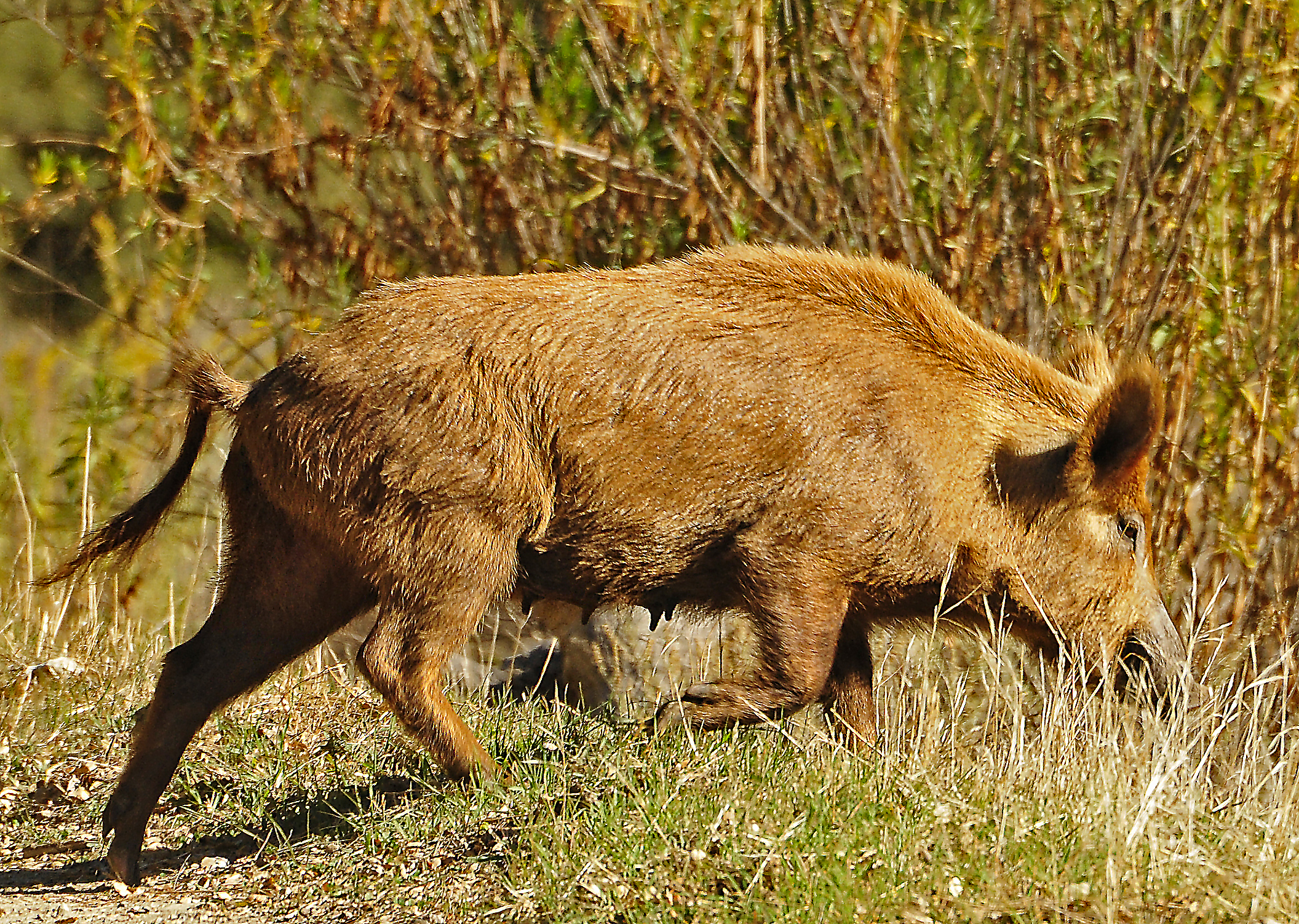
Photo by Mike Dickerson
Everyone has to start somewhere, and the easiest way to launch into hog hunting is to befriend an experienced hog hunter or book a hunt with a reputable guide who specializes in hogs. The key word is “reputable.” Over the years, I’ve seen the good, bad, and ugly sides of guided hog hunts. I have followed up a wounded, angry hog in thick brush, thanks to a bad shot made by a guide who wanted to take time out of my deer hunt to shoot a pig. I’ve played ring around the juniper with a huge angry hog while armed only with a camera (don’t ask). I’ve spent a miserable weekend hunting with a guide who talked, non-stop and loudly, from sunrise to sunset. I suspect he’s still talking. Here’s what to consider when researching hog hunting guides.
Book a Guide Based on Hunting Technique
Depending on where you hunt, guides may employ a variety of techniques. Some offer hunts behind a pack of bay dogs, like Catahoulas, or catch dogs, like a Dogo Argentino (the best hog dog I ever hunted with was a border collie that bayed up hogs all by himself). This type of hunting appeals to adrenaline junkies because things can get wild at the end of a chase, and shots can be up close and personal.
However, guides will also offer spot-and-stalk hunts, hunts over feeders, and even nighttime shoots. Decide which tactic is most appealing to you and then start your research with guides who specialize in that tactic.
How to Find a Quality Hog Hunting Guide
Do your homework before paying for what should rightfully be a high-quality hunting experience. Explain that you’re new to hog hunting and ask questions about how hunts are conducted, success rates, hunt policies, and what you would need to bring. Let the guide know that you want to learn. Ask for references and check them.
Guided hog hunts are typically far more affordable than guided hunts for other game animals, plus some operations will provide – at a price – guns, optics, ammo, food, and lodging. No-frill hunts or semi-guided hunts are more affordable, and some outfitters will add hogs for free when you book a hunt for other animals. It’s all about choosing what type of hunting experience you want and then deciding how much you’re willing to pay.
DIY Hog Hunting
For the do-it-yourself hunter, scouting is essential. You can’t shoot them if you can’t find them. You will generally find more hogs on private land than on public land. A lot of public land lacks water, forage, and substantial hog numbers. But the only way to know if hogs are hitting a property is through thorough scouting.
Scout Hard for Hogs
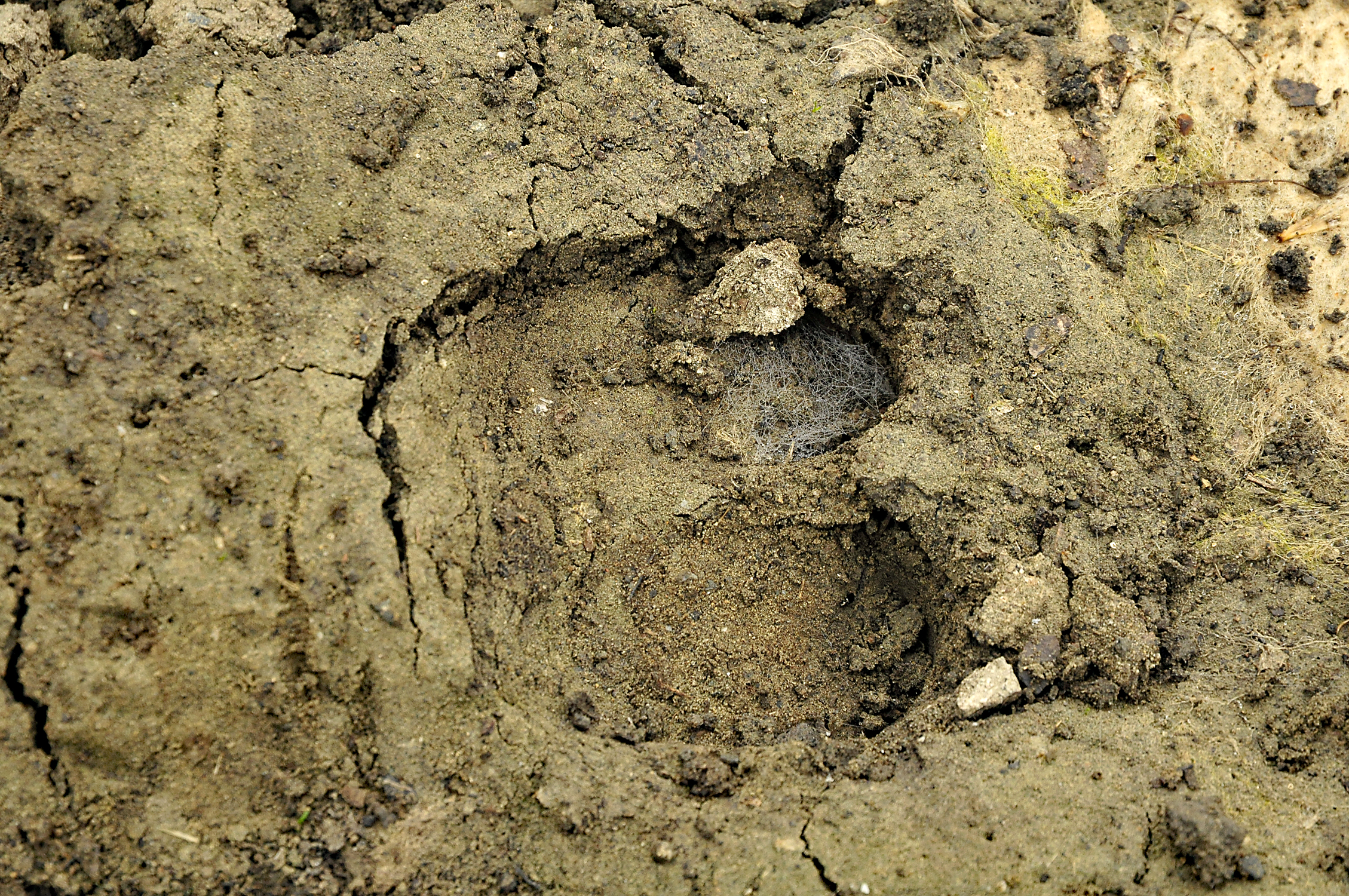
Photo by Mike Dickerson
Hogs leave unmistakable sign wherever they go. The trick is to distinguish fresh sign from old sign, and then pattern hog movements to plan your hunt. Hogs use well-worn trails to travel from bedding areas in thick cover to feeding areas, like standing crops or stubble fields, or to water. You’ll find bristly hog hair in barbed wire fences where these trails cross a fence. Fresh tracks following a rain indicate recent hog activity (hog tracks are more rounded and less pointed than deer tracks). Fresh rooting, where the ground looks as though it has just been rototilled, is an obvious sign.
Other indicators include muddy wallows; scraped out bedding areas on brushy hillsides; rub trees, often caked in mud; and evidence of the scatological variety, which is usually larger and more irregularly shaped than deer scat. Even torn-up cowpies provide clues. Hogs have few reservations when it comes to food, and they happily root around in cowpies for kernels of undigested grain.
Another sure sign is torn-up ground beneath an acorn-dropping oak tree. Hogs will scrape the ground clean when feeding on acorns. They often switch from picked-over stubble fields to hit acorns, and you may find them doing so at any time of day. They run from tree to tree because they know which ones are dropping acorns.
Watch those areas, either with optics or with trail cameras, and pigs will likely show up—unless they have better vittles elsewhere.
Spot and Stalk
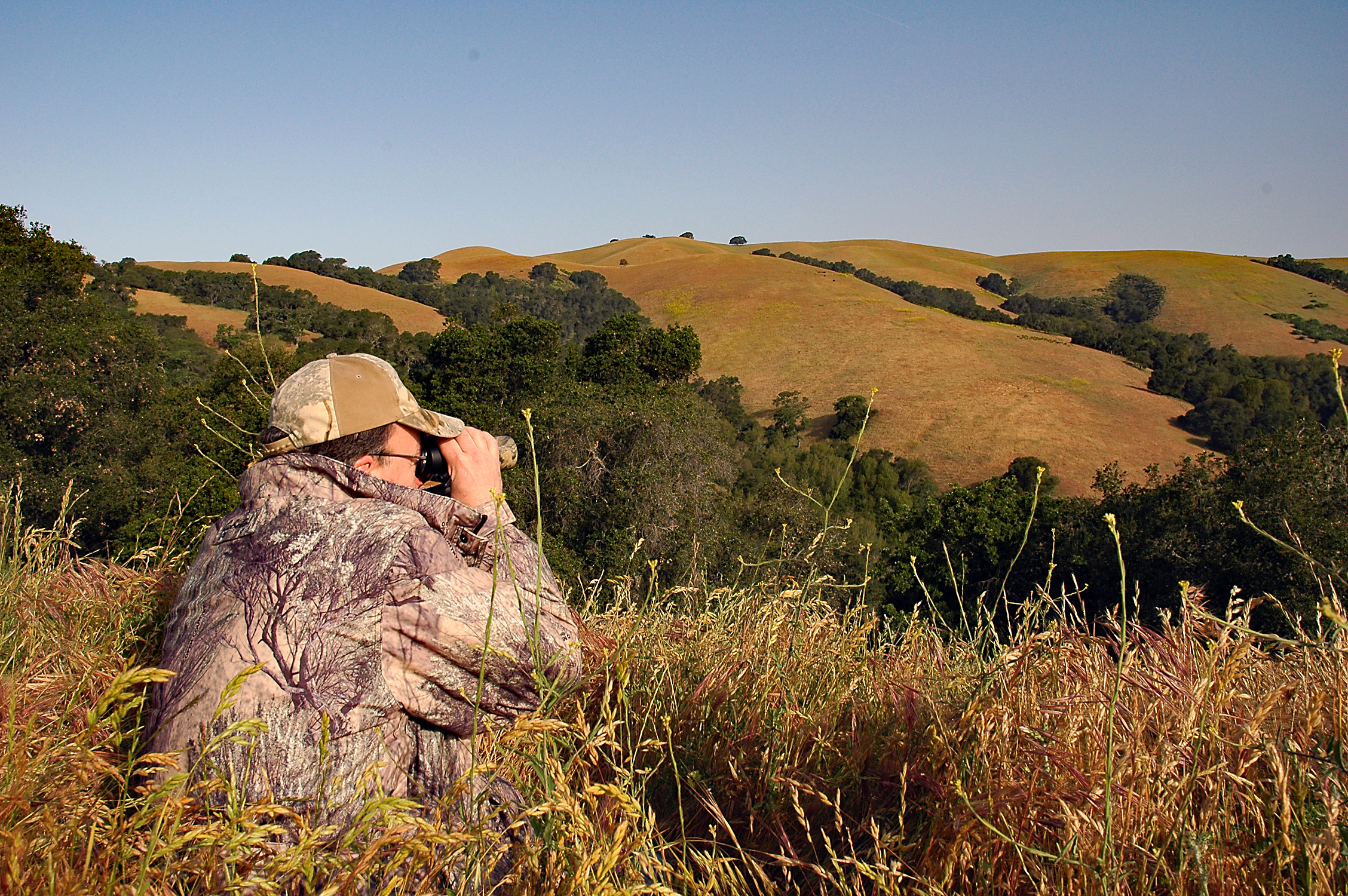
Photo by Mike Dickerson
In favorable terrain, hogs are ideal game for a spot-and-stalk hunt because they have a couple of chinks in their defensive armor. They have an excellent sense of smell, dictating that you must stalk with the wind in your favor. However hogs don’t have great hearing compared to other big game critters we hunt. Popular hunting lore says hogs have poor eyesight. That’s not entirely true. They have monocular vision, designed to detect food and close-range danger. This results in poor depth perception. They easily pick up movement, but may not be alarmed by it if you are some distance away. It’s sometimes easier to stalk a big loner boar, because you can move when he’s not looking your way, than it is to stalk a sounder with many pairs of eyes, ears, and noses.
In some areas, spot-and-stalk hunting means getting to high ground and glassing a lot of country early or late in the day when hogs are on the move. In other areas, spot-and-stalk hunting is best done by driving, spotting, and then stalking. Driving enables you to cover more ground on big ranches. However, heavily pressured hogs may flee at the sight of a truck or ATV. Less-pressured hogs may not be alarmed by a vehicle. I once shot a plump sow at 20 yards after she stopped in the middle of a ranch road and stood there staring at my truck. Pigs are intelligent, but you sometimes find one that skipped school.
Spot-and-stalk is one of my favorite techniques because it’s exciting and just plain fun. It’s possible to stalk quite close. In one instance (of questionable intelligence), I stalked to within five yards of a giant boar in the dark. Legal shooting light in the state I was hunting expired mid-stalk, but I pressed on just to see how close I could get. The boar let out a savage grunt when he finally detected us, and my hunting partner and I left a mean set of tracks in our hasty retreat.
Still-Hunting Hogs
Still hunting is another exciting way to hunt hogs. It involves moving slowly and quietly, with the wind in your face, through cover likely to hold hogs. Pause frequently to listen for the grunts and snorts that hogs make, and scrutinize dark-shaded areas for dark-colored hogs. Work through cover along active trails early and late in the day. At midday or during hot weather, slowly pick through bedding areas, which are typically found in shaded thickets, brushy hillsides, creek bottoms, or around the edges of swampy areas. With luck, you can sometimes glass suspected bedding areas, spot hogs, and then work your way close for a shot.
This is a thrilling way to hunt. There are few things as attention-getting as sneaking up on a big hog in the thick stuff only to have that hog – and 30 others you didn’t see – stampede in all directions around you. Shorter-barreled, fast-handling guns are preferred for this style of hunting. The key is to detect the hogs before they detect you.
Stand Hunting for Hogs
Ambushing hogs from a tree stand or blind, or simply sitting behind a screen of light brush on the ground, can be one of the most effective methods when you have them patterned on a feeder, crop field, trail or water source. The most important consideration when hunting from a stand is to make sure you are positioned downwind from the area you expect hogs to arrive from. It’s also a good idea to stalk your way to your stand – hogs may already be there when you arrive.
Timing is important. You may need to work your way in quietly and set up in the dark so you’re ready to catch hogs arriving or leaving at first light. If you’re setting up on the ground in the dark, choose a spot that provides good shooting lanes and some separation from where you expect hogs to be. I once set up too close to a trail in the dark and hogs arrived early, streaming past me within spitting distance. It was an unnerving experience. I have also set up on the ground too close to a feeder. Hogs came in on the run and were milling all around me. How I remained undetected, until I shot a hog, remains a mystery. It takes, shall we say, a firm constitution to remain still in such situations.
Hunt Hogs at Night
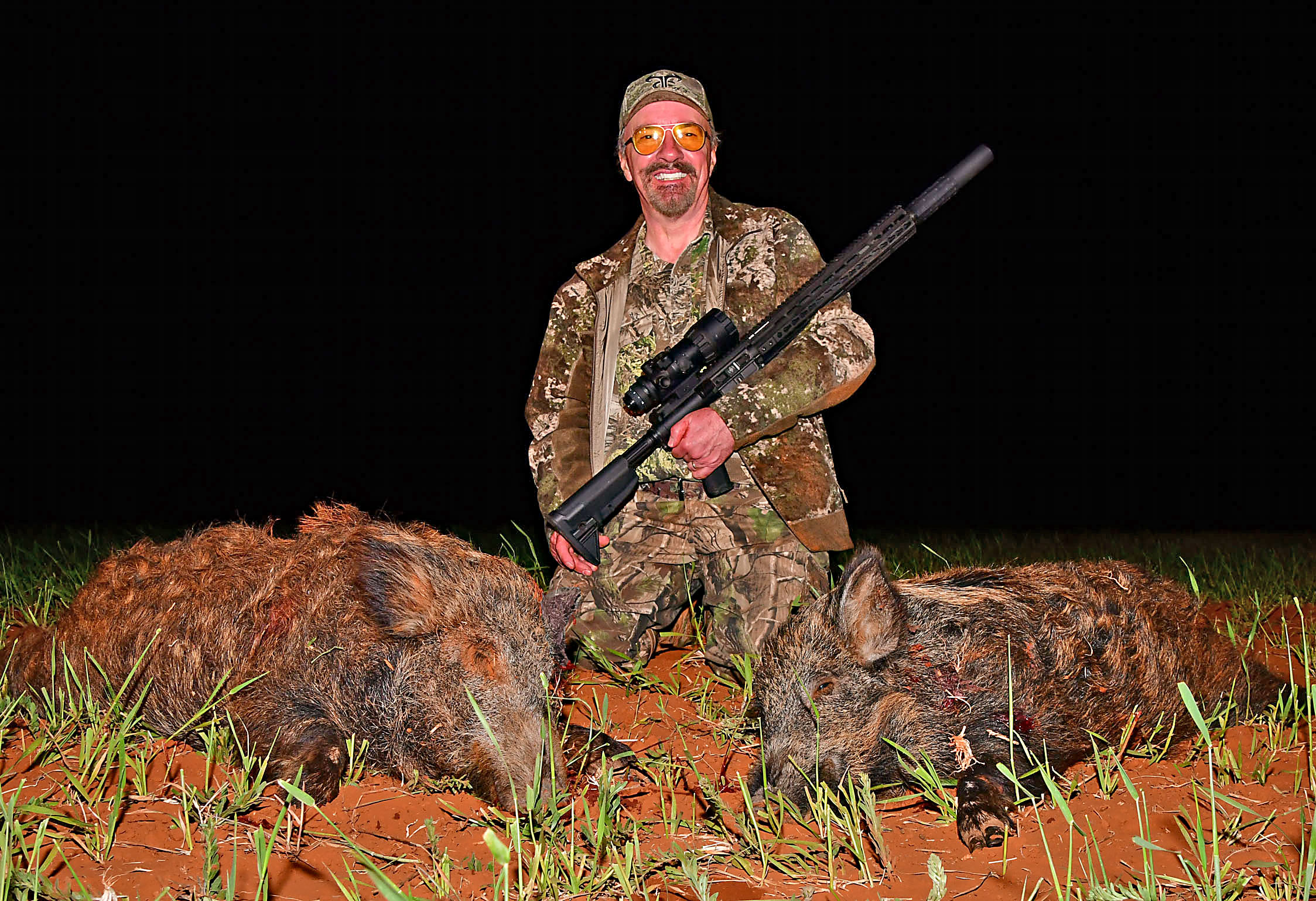
Photo by Mike Dickerson
During hot weather or in areas where hogs receive a lot of hunting pressure, they may move almost exclusively at night. Where legal, hogs are hunted at night with lights, thermals, or night vision.
The most popular tools are still hand-held spotlights, weapon-mounted lights, or LED lights attached to feeders. Hitting hogs with a burst of intense white light is a great way to scare them off, so most hunters use red or green lights. Some spotlights have a switch that lets you change from red to white light when you’re ready to make a shot.
Read Next: Best Thermal Monoculars
Night vision or thermal scopes are increasingly popular for hunting hogs at night, especially in states like Texas that are overrun with hogs. I’ve used these scopes hunting from a stand and walking into stubble fields where hogs are feeding. They can be very effective, but the good ones come at a price that may be too steep for a novice hog hunter. If you’re new to the game, you may be better off booking a hunt with a guide or friend who hunts at night using thermal scopes.
Cartridges and Bullets for Hog Hunting
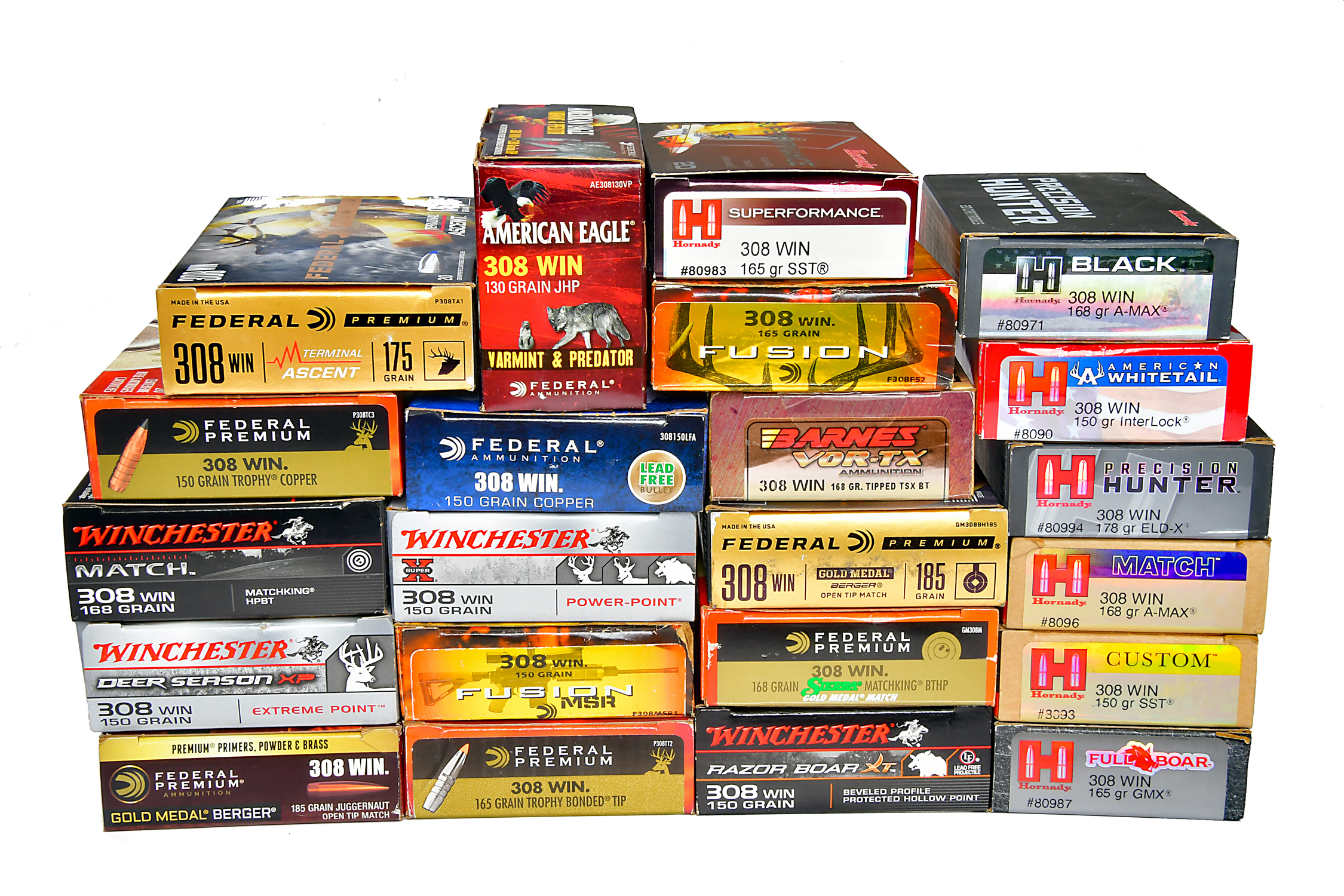
Photo by Mike Dickerson
Hogs are tough, but they are not bulletproof. Most are killed with cartridges and guns commonly used for deer hunting. Beginners are best served using .243 Winchester as a minimum and .30-06 Springfield as a maximum, depending on your tolerance for recoil. There are a ton of great cartridges that fit in between, such as the .308 Winchester, which delivers more than enough punch, with moderate recoil, for killing even the biggest hogs within reasonable range. No matter which gun or cartridge you choose, practice shooting in field positions and learn the trajectory of your chosen bullet at the distances from which you expect to shoot.
Lots of hogs are killed with the .223 Rem. and similar cartridges, but let’s get one thing straight. There’s a big difference between hunting hogs as game animals and hunting hogs to eradicate them. AR-15s are popular in the eradication role when the goal is to quickly pump lead into as many hogs as possible. For hunting hogs in the traditional sporting sense, an AR-10 chambered in harder-hitting cartridges is a better choice.
Read Next: Best Hog Hunting Guns
Also consider your bullet selection. Steer clear of full metal jacket bullets, which can pencil through without causing enough internal damage to be quickly fatal.
Bullets like the Federal Fusion, Hornady ELD-X and Federal Terminal Ascent have served me well. I’ve killed many hogs with traditional cup-and-core soft point bullets as well, but I’ve also seen a number of hogs wounded and lost when shot with these bullets, which can sometimes come apart when they hit bone and fail to deliver desired terminal performance. For big boars, you’re better off using bullets designed to penetrate deeply and expand without coming to pieces, like the Swift A-Frame, Nosler AccuBond and Partition, and monolithic bullets like the Barnes TTSX. No matter what cartridge you use, always be ready to make a quick follow-up shot. I’ve seen a number of hunters walk up on “dead” hogs only to have the hogs jump up and run off.
Shot Placement on Hogs
If you visit enough online hunting forums, you’ll likely spot Joe Hogslayer bragging about the tonnage of hogs he’s killed with head shots using a .22 Long Rifle. My advice for new hog hunters: Don’t even think about it.
Many hunters prefer head or spine shots, but if you’re new to hog hunting, stick with centerfire cartridges and heart/lung shots. The target for head or spine shots is small and there’s little room for error. However, if you stick one in the boiler room with a tough, expanding bullet that penetrates deeply, you’ll kill any hog cleanly. It may run a short distance, but this shot placement with a proper bullet increases the chance of an exit wound, and two holes are preferable to one for blood trailing.
If you’re hunting with a handgun, avoid shooting at the sloping forehead of a hog. I once skimmed a .44 Mag. slug off the forehead of a charging boar. I jumped to the side and was fortunate to put one in his ear as he ran past.
There is an element of danger in hunting a big boar, but it’s often overstated. A charging hog may not be coming after you – you may just be blocking his escape path – but it’s unwise to gamble. Use a shooting rest and make your first shot count. You don’t need to fear hogs, but you should respect them. According to a 2013 study, there were 100 documented attacks by feral hogs on humans in the U.S. between 1825 and 2012. Four of the attacks were fatal, and three of those were from pigs that were wounded by hunters. I’m sure these numbers are under-reported. I know several guides who bear wicked tusk scars on their legs. Through an abundance of luck, if not caution, I have thus far avoided the need for stitches in a lifetime of hunting hogs.
Eating Wild Hogs
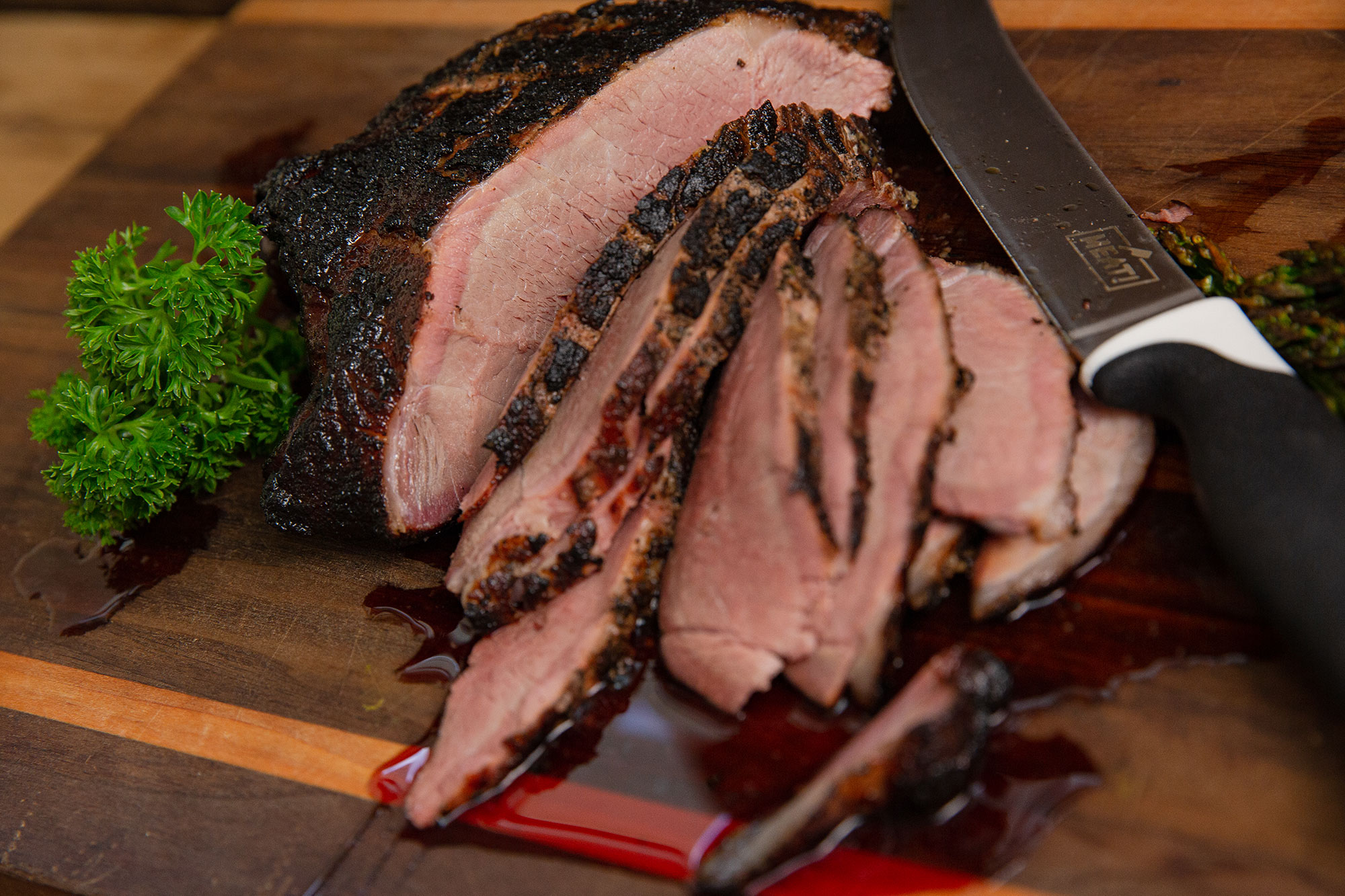
Hogs make excellent table fare, but there can be a profound difference between trophy and tasty. Big, old boars can be rank and nearly inedible. The best-eating hogs are boars weighing less than 150 pounds, or sows of any size. Between field and table, there are a few important things to remember.
Feral hogs can carry and transmit some diseases that you can do nicely without. Wear latex gloves and exercise care when field dressing, skinning, and butchering hogs to avoid blood-to-blood transmission. Skin animals and get the meat cooled as quickly as possible. If a hog looks ill or unnaturally skinny, let it lay.
Read Next: Can You Eat Wild Hog? In Short, Hell Yeah
Wild hog meat is much leaner than domestic pork, and you can turn it into shoe leather with improper cooking. Slow, moist cooking methods are best. Just make sure you cook it to a minimum internal temperature of 145 degrees for whole meat and 160 degrees for ground meat. You can find lots of good recipes online, and the effort is worth it.
Even people who turn up their noses at my game mounts will come running when they hear I’m making my wine country boar roast with balsamic reduction, pork chops with mushroom gravy, or spicy Italian hog sausage with pasta. I even won a chili cook-off in Texas, which is saying something, using a combination of venison and hog meat.
Final Thoughts on Hog Hunting
Feral hogs are an invasive species, but they’re also a resource. There are a wide variety of ways to hunt them, and when treated with fair-chase principles, they make for challenging game animals. Make the most out of your hog hunting pursuits, and sharpen your hunting skills in the process.
